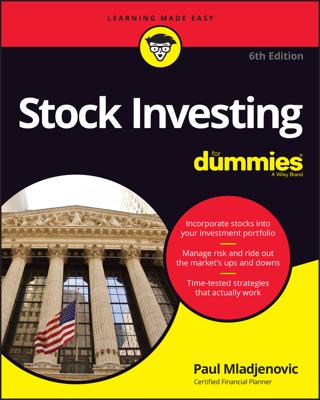The financial risk of stock investing is that you can lose your money if the company whose stock you purchase loses money or goes belly up. This type of risk is the most obvious because companies do go bankrupt.
You can greatly enhance the chances of your financial risk paying off by doing an adequate amount of research and choosing your stocks carefully. Financial risk is a real concern even when the economy is doing well. Some diligent research, a little planning, and a dose of common sense help you reduce your financial risk.
In the stock investing mania of the late 1990s, millions of investors (along with many well-known investment gurus) ignored some obvious financial risks of many then-popular stocks. Investors blindly plunked their money into stocks that were bad choices.
Consider investors who put their money in DrKoop.com, a health information website, in 1999 and held on during 2000. This company had no profit and was overindebted. DrKoop.com went into cardiac arrest as it collapsed from $45 per share to $2 per share by mid-2000. By the time the stock was DOA, investors lost millions. RIP (risky investment play!).
Internet and tech stocks littered the graveyard of stock market catastrophes during 2000–2001 because investors didn’t see (or didn’t want to see?) the risks involved with companies that didn’t offer a solid record of results (profits, sales, and so on). When you invest in companies that don’t have a proven track record, you’re not investing, you’re speculating.
Fast forward to 2008. New risks abounded as the headlines railed on about the credit crisis on Wall Street and the subprime fiasco in the wake of the housing bubble popping. Think about how this crisis impacted investors as the market went through its stomach-churning roller-coaster ride.
A good example of a casualty you didn’t want to be a part of was Bear Stearns (BSC), which was caught in the subprime buzz saw. Bear Stearns was sky-high at $170 a share in early 2007, yet it crashed to $2 a share by March 2008. Its problems arose from massive overexposure to bad debt, and investors could have done some research and avoided the stock entirely.
Investors who did their homework regarding the financial conditions of companies such as the Internet stocks (and Bear Stearns, among others) discovered that these companies had the hallmarks of financial risk — high debt, low (or no) earnings, and plenty of competition. They steered clear, avoiding tremendous financial loss. Investors who didn’t do their homework were lured by the status of these companies and lost their shirts.
Of course, the individual investors who lost money by investing in these trendy, high-profile companies don’t deserve all the responsibility for their tremendous financial losses; some high-profile analysts and media sources also should have known better. The late 1990s may someday be a case study of how euphoria and the herd mentality (rather than good, old-fashioned research and common sense) ruled the day (temporarily).
The excitement of making potential fortunes gets the best of people sometimes, and they throw caution to the wind. Historians may look back at those days and say, “What were they thinking?” Achieving true wealth takes diligent work and careful analysis.
In terms of financial risk, the bottom line is . . . well . . . the bottom line! A healthy bottom line means that a company is making money. And if a company is making money, then you can make money by investing in its stock. However, if a company isn’t making money, you won’t make money if you invest in it. Profit is the lifeblood of any company.

